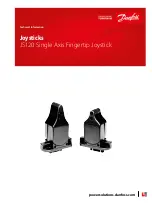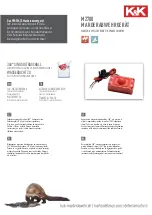
4
WARNING: Before handling
these pumps and controls,
always dis
con
nect the pow
er
first. Do not smoke or use
sparkable electrical devices or
flames in a septic (gas eous) or
possible septic sump.
1. Pump does not run in
Hand position.
a. Check pump circuit
breaker and control fuse
for tripping or blown
condition.
b. Check incoming power
volt
age and control
cir cuit volt age.
c. Check overload re lay to see
if it is tripped. Reset relay
if tripped and check pump
current with ammmeter.
d.
With the power off
, check
motor heat sensor
continuity.
e. Check wiring of pump to
con
trol panel. It should
agree with the sche mat ic.
f. Check contactor coil
re sis tance.
2. Pump does not run in
Auto position.
a. Check items (a.) through
(f.) per Item #1 above.
Pump
Troubleshooting
If the start relay is not
operating check the pump and
the system voltage to be sure
that they match. Check the
power wiring to ensure that the
pump is connected properly.
Start the pump once more and
check that the voltage from the
terminal for the black wire to
the white wire is within system
tolerance. Call for help if you
cannot resolve the problem.
8. Check junction boxes for
moisture. Moisture may
cause chattering of relays
and contactors.
9. Check for moisture inside
control panel enclosure.
Moisture can cause damage to
electrical com
ponents. Check
door gasket for prop er seal.
10.Check labels to verify they
have not been damaged.
11.Lubricate enclosure hinges.
12.Pull floats and check for
proper operation and ensure
there is no foreign buildup
on them.
Spare Parts List:
The following is a list of
recommended spare parts.
However, conditions of ser
vice
vary significantly and a general
list may not in its entirety be
applicable to a given installation.
The user should ex
er
cise
judgment in defining specific
require ments based on this guide.
1. Fuses for control transformer
primary and secondary. (If
required)
2. Contactor.
3. Bulbs for any light requiring
a bulb.
4. Control transformer. (If
required)
5. Alternator relay. (If required)
Optional: The LOW WATER /
REDUNDANT OFF float should
be installed just above where the
pump begins to ingest air
normally; this is about the top of
the volute.
The OFF float should be installed
about halfway down the pump. If
a LOW WATER / REDUNDANT
OFF float is used, then the off
float should be installed a
minimum of 4 inches above the
LOW WATER / REDUNDANT
OFF float.
Install the ON / LEAD floats a
minimum of 4 inches above the
OFF float. If additional volume is
to be pumped on each cycle or if
the pump running time for each
cycle needs to be increased, then
increase the distance from the
ON / LEAD float to the OFF float
as needed.
Install the HIGH WATER float
4 inches above the ON / LEAD
float.
For duplex systems install the
LAG / OVERRIDE float 4 inches
above the HIGH WATER float.
On duplex systems where both
pumps have to run on a daily basis
to keep up with the incoming
flow, then the HIGH WATER and
the LAG / OVERRIDE float
position should be reversed.
Float
Controls
Содержание Novus 1000 Series
Страница 11: ......






























